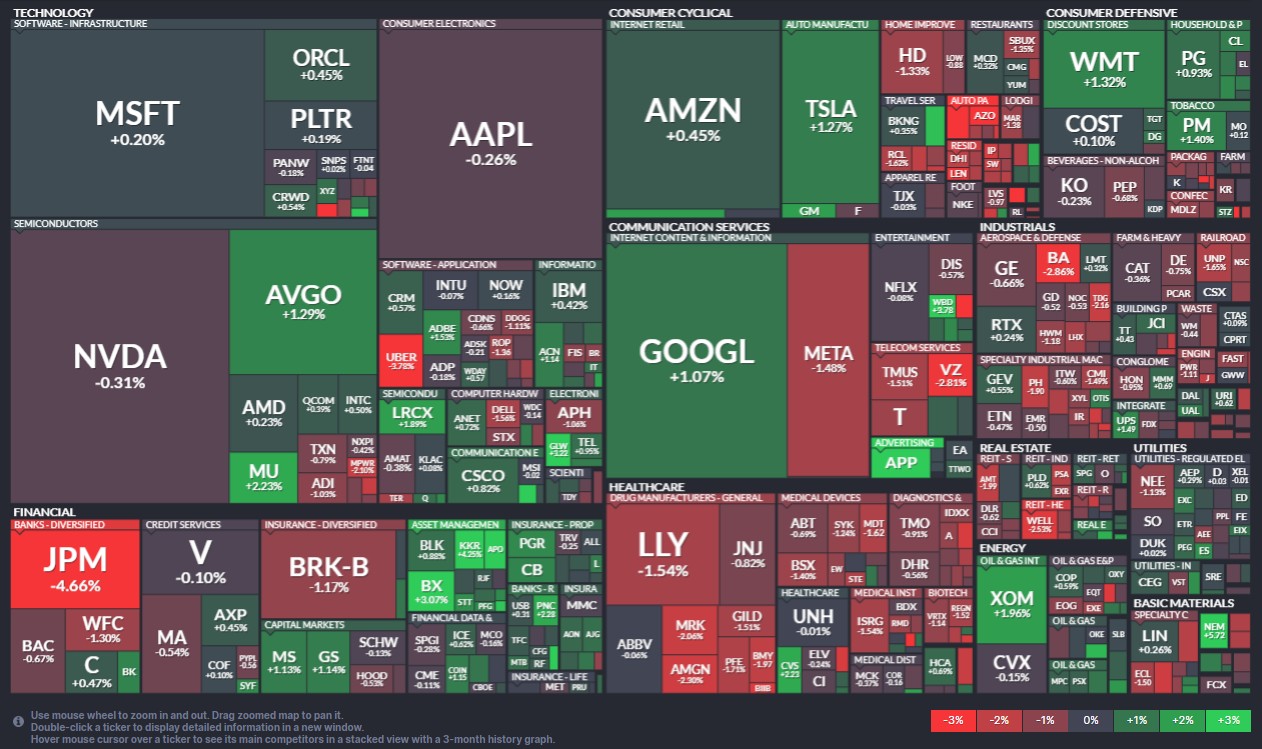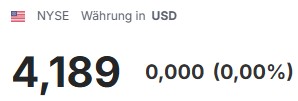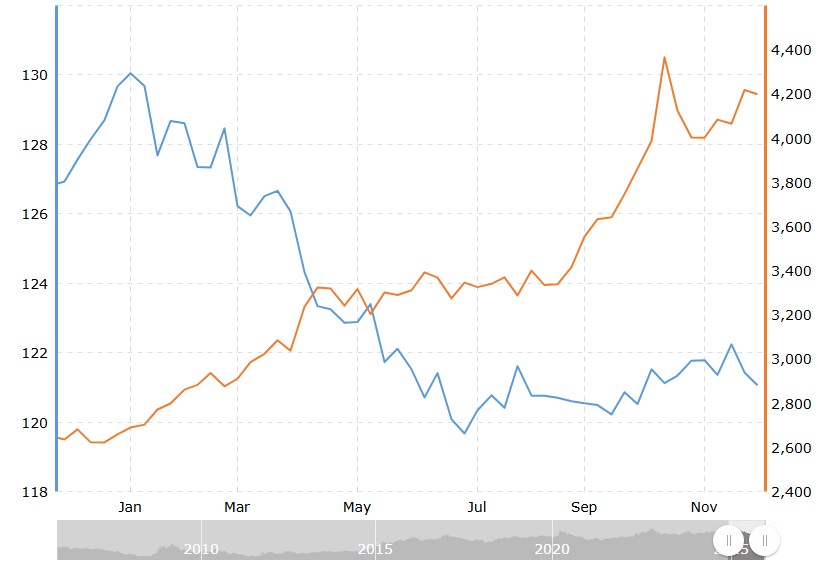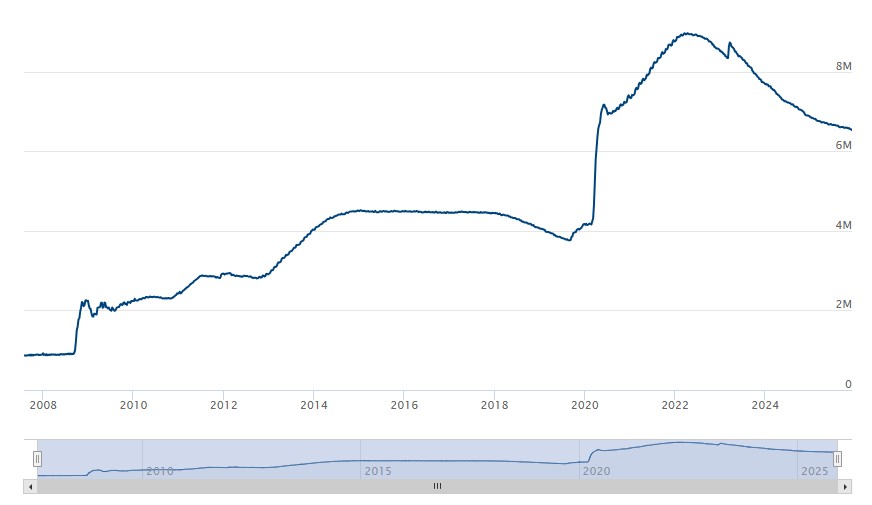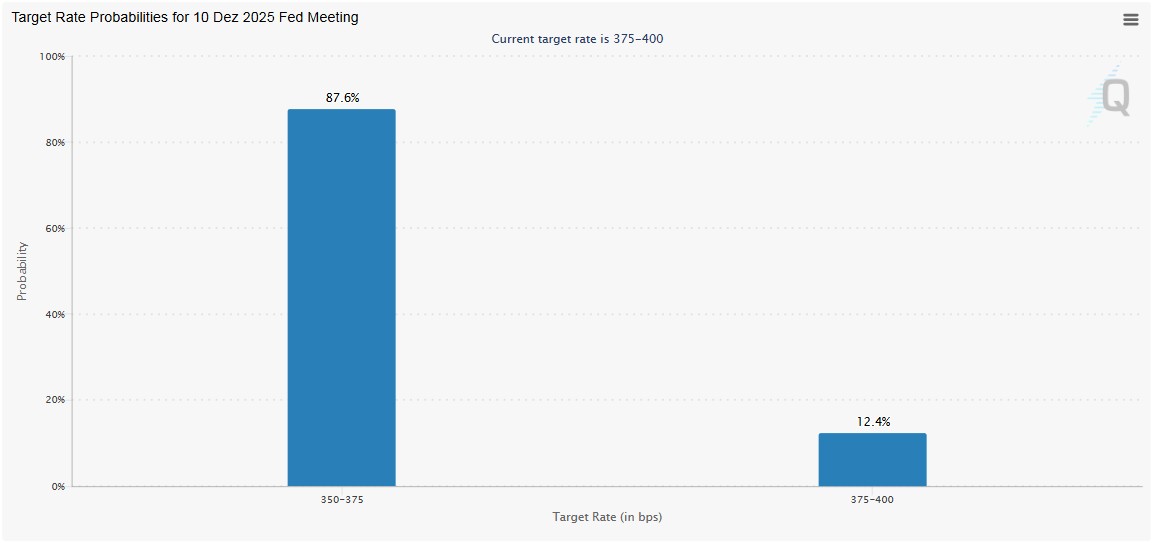Copy-Trading
Benefit from our market experience – simple, transparent, and professional!
- 50,- / position request

Global Markets Sunday News
End of the year with several major unknowns
The financial markets picked up speed overall last week. This development is due to rising expectations of an interest rate cut by the US Federal Reserve next week. These expectations were reinforced following the publication of employment figures by the personnel services provider ADP, which reported a reduction of 32,000 jobs in the private sector. The US core consumer price index (PCE Core) published on Friday was in line with forecasts and had no impact on market sentiment. Wall Street traded in the range of its historic highs. In this environment, risk appetite could continue, making a traditional year-end rally still possible.
Translated with DeepL.com (free version)
Tops of the week
American Eagle +13,19 %: The company continues to benefit from the hype generated by its collaboration with Sydney Sweeney. American Eagle’s third-quarter results significantly exceeded expectations.
Inditex +13,7 %: The parent company of fashion brand Zara has reported results that exceed market estimates. Thanks to strong sales momentum in November, the company was able to raise its targets.
Stellantis +13,28 %: The sector has received a boost following the Trump administration’s decision to relax environmental regulations for car manufacturers. This change not only paves the way for a direct presence in the North American market, but also sets the stage for speculation about a less stringent European policy compared to the current framework. UBS’s upgrade also caused Stellantis’ share price to rise sharply. According to the broker, the group is likely to benefit from dynamic growth in North America.
Bayer +9,55 %: In the legal dispute over possible cancer risks posed by glyphosate, the German conglomerate is receiving support from the White House. The US government’s top lawyer has recommended that the Supreme Court review the case. If this happens, further lawsuits are likely to be shelved for good.
Salesforce +13,03 %: Due to high demand from companies for its AI agent platform Agentforce, Salesforce has revised its forecasts for the 2026 fiscal year upward.
Meta +3,93 %: According to a Bloomberg report, Mark Zuckerberg’s company plans to cut the budget for the metaverse by up to 30%. The cost savings are very welcome, as the company is currently investing tens of billions of dollars in AI.
Flops of the week
Pure Storage -20,83 %: The US provider of storage and data management solutions is continuing its aggressive spending policy. At the same time, there is talk of a possible switch to a subscription model – a prospect that does little to calm the markets.
Swiss Re -8,55 %: The global reinsurer, which focuses on risk management, suffered a setback this week. Investors consider the company’s targets to be too conservative. In addition, the latest announcements on corporate governance are hardly convincing, and several analysts are sticking to their negative assessment despite the newly announced strategy.
Kroger -6,79 %: Due to consumer restraint, the US food retailer has revised its forecast for full-year sales downward. In particular, the group suffered from the temporary suspension of the government food assistance program SNAP.
Snowflake -8,94 %: Despite solid quarterly figures and new announcements in the AI sector, the cloud and data analytics provider’s share price fell as forecasts were considered too cautious. Market participants are concerned about a slowdown in growth and price discounts granted on certain contracts.
Philips -4,08 %: The group, which specializes in medical imaging and health technologies, is benefiting from the market launch of new imaging solutions with AI integration. These are perceived as a sign of dynamic technological development. On the other hand, the market also noticed that the company was more cautious in its comments on future growth.
Waw materials
Energy: Similar to the Ukraine talks between Moscow and Washington, which have not yet led to any significant progress, the price of crude oil is also stagnating. Meanwhile, Ukraine is maintaining pressure on Russian energy infrastructure. After the Ukrainian army targeted two tankers in the Black Sea last week, it has now announced that it has attacked a Russian oil refinery in the city of Sysran. From a geopolitical perspective, the escalating tensions between the United States and Venezuela are also worth mentioning. US intervention could affect the country’s crude oil exports. OPEC+ is sticking to its production targets for early 2026. Discussions about the maximum production capacity of the cartel’s members continue to trigger internal conflicts. Brent crude oil traded in the range of USD 63, while the US benchmark WTI traded at USD 58.30 per barrel.
Metals: The price of copper hit a new record high of $11,450 per ton on the London Metal Exchange (LME). This development was fueled by the weaker dollar and the decline in production in Chile, the world’s most important copper producer. Gold also gained ground and now costs $4,235. The precious metal is benefiting from purchases by central banks, which the World Gold Council estimated at 53 tons net in October. Poland and Brazil were among the most avid buyers. In the short term, two factors in particular are favoring the gold price: the decline of the dollar and the general expectation of an interest rate cut by the US Federal Reserve. Silver also continued to rise in price and is currently trading at USD 58.20.
Agricultural commodities: The price of wheat stabilized in Chicago. While market participants are closely monitoring developments in the Black Sea region, global supply remains high. Wheat (contract maturing in March 2026) is trading at around 539 cents per bushel. Soybeans lost some ground due to a lack of orders from China. The contract maturing in January 2026 is now trading at 1,128 cents per bushel. Corn rose slightly to 445 cents (delivery in March 2026).
Macroeconomics
Market sentiment: The focus is on the US Federal Reserve’s next meeting, scheduled for Wednesday. Investors estimate the probability of a 25 basis point interest rate cut at 87%. Jerome Powell’s speech is eagerly awaited, especially after his recent rather restrictive comments. The latest inflation data is in line with expectations. Consumer prices rose by 0.2% compared to the previous month. Following the release, yields on long-term securities remained stable. Ten-year US government bonds moved within a horizontal consolidation channel between 3.95% and 4.17%. Equity indices held up well despite high valuation levels, mainly due to the prospect of rising corporate earnings.
Cryptocurrencies: This week (once again) required strong nerves to follow Bitcoin’s price performance. After falling by around $7,000 to $83,800 on Monday alone, the digital currency recovered the next day and rose above the $90,000 threshold again. Thanks to this swing, Bitcoin ended the week on an almost even footing. Apart from technical factors that had favored the upturn on Tuesday, the price also reacted to the announcement by the US Securities and Exchange Commission (SEC). The SEC wants to create a more favorable environment for companies in the digital asset sector with its so-called innovation exemption. This measure will benefit the further development of the ecosystem and has helped to reassure crypto investors. However, the market is also benefiting from another decision: Bank of America announced that its wealth advisors will be allowed to recommend portfolio allocations in cryptocurrencies to clients starting next month. This is another glimmer of hope for the sector, albeit a small one. Overall, the major cryptocurrencies followed the market leader and did not show any major fluctuations: Ether (ETH) gained 3.4% in value and returned to around $3,000, Solana (SOL) rose 2% to $136, Binance Coin (BNB) rose 1.30% to $886, and XRP fell 4% to $2.06.
Outlook
The US Federal Reserve’s interest rate decision on Wednesday is likely to attract investors’ attention next week. However, there are three other important events on the agenda: the results from Oracle, Adobe, and Broadcom. All three are related to AI. Will Broadcom continue to play first fiddle? Will Adobe have to take a hit due to tougher competition? And above all, will investors continue to invest in leading AI player Oracle now that they know that the previous quarter’s results were too good to be true and that the vast sums invested in the stock are now making the bond market nervous? In short, there may be more unknowns than expected at the end of 2025.

